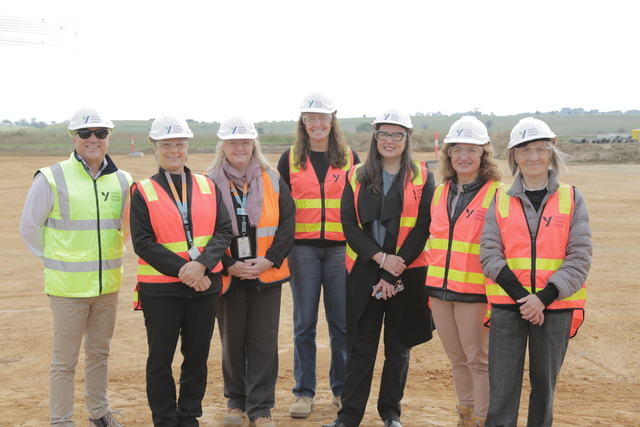
Yarra Valley Water is building a second food waste to energy facility that will tackle food waste, generate electricity and slash emissions.
The new Lilydale facility will generate up to 39,000 kilowatt hours of electricity per day – enough to power the equivalent of more than 2,200 Victorian households.
Managing Director Pat McCafferty said it was great to see the project come to fruition.
“We’ve come a long way since we built Victoria’s first commercial scale food waste to energy facility at our Aurora Sewage Treatment Plant,” he said.
“Today (17 April), we’re proud to announce the start of construction of our second food waste to energy facility, which will be 50 per cent larger than our first.”
Yarra Valley Water has been successfully operating its award-winning facility in Wollert since 2017, which has diverted over 175,000 tonnes of food waste from landfill to date.
Food waste is a growing problem, with Australians generating almost 300 kilograms of food waste per person, according to the Australian government’s National Food Waste Strategy.
“In Victoria, we’re generating over two million tonnes of food waste per year. Almost half of that ends up in landfills – having a devastating impact on our environment,” Mr McCafferty said.
“The good news is that these are figures that can be changed, thanks to innovative projects like this and a change in consumer and retailer behaviours.”
The new $48 million Lilydale facility will start to take commercial food waste from as early as 2025 and is expected to be fully operational in 2026.
The second food waste to energy facility will divert about 55,000 tonnes of food waste from landfill every year.
With the addition of this second facility, Yarra Valley Water is on track to meet its ambitious emission reduction targets to become net zero and use 100 per cent renewable energy from mid-2025.
It will be one of the largest food waste to energy facilities of its kind in Australia. Unlike some waste to energy plants, it will not use a gasifier or incinerator to burn waste. It uses a natural process to convert organic waste to energy.
The process begins when food waste is delivered from commercial suppliers. The organic waste can be anything from fruit and vegetables from markets – to fats and grease from a fast-food restaurant.
“It works just like a human stomach. The waste is fed into digestors, and as it breaks down it generates biogas which in turn powers electricity turbines.
Many sewerage facilities already use “anaerobic digestors” to treat sewage, which makes them well placed to leverage this innovative technology.
Mr McCafferty added that the new Lilydale facility will also benefit local businesses, the environment and the broader community.
“We’ve already started to work with local businesses who could benefit from using our facility,” Mr McCafferty said.
“There are benefits for the broader community too.”
“We heard through our consultation that people would like us to plant more trees in the area. Our project team is working closely with Yarra Ranges Council and we’ll plant around 1,600 trees with the help of local schools next winter.”
For more information about becoming a business partner and supplying waste visit the ReWaste website or contact enquiries@rewaste.com.au.







